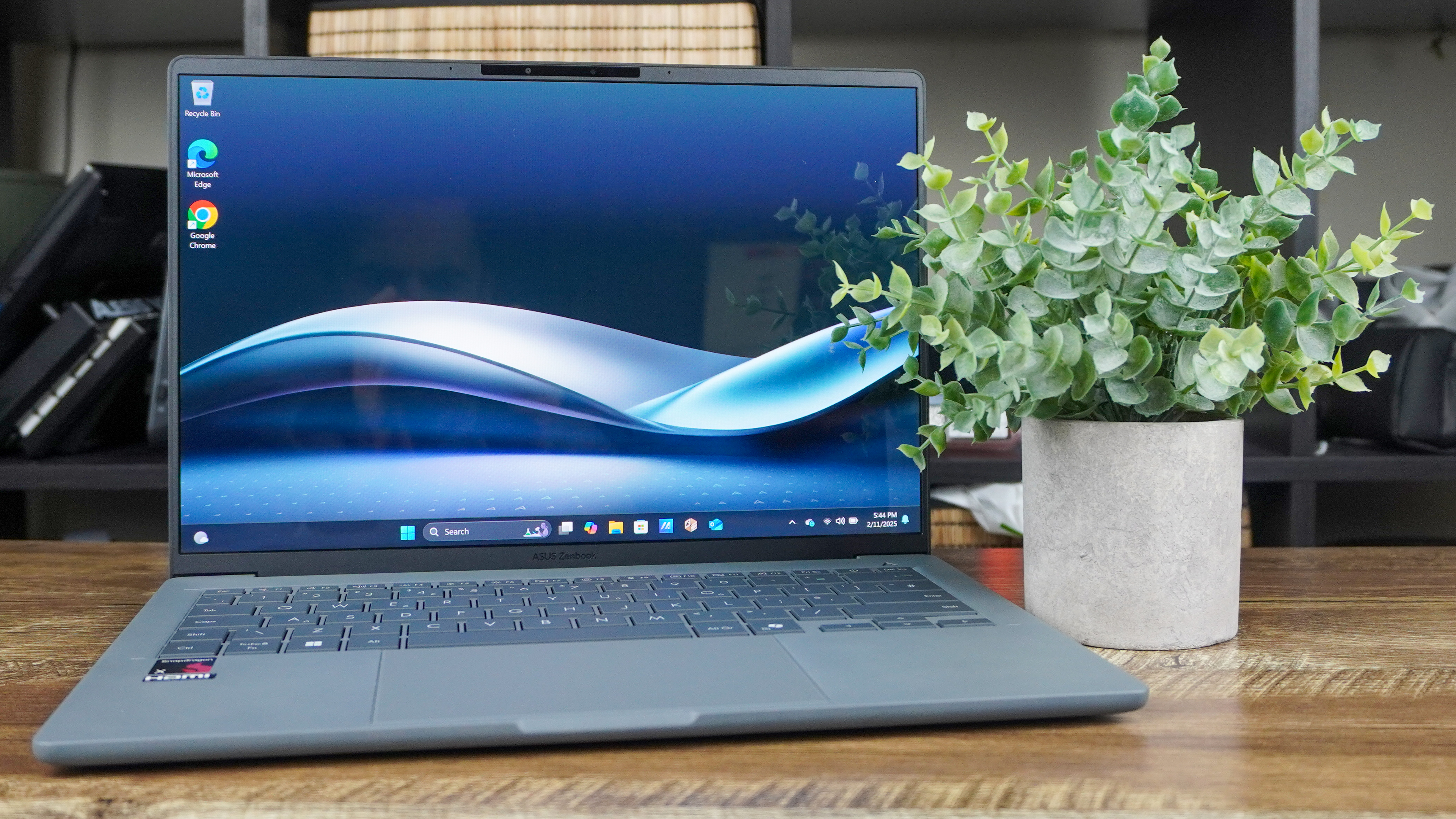
To beat the MacBook Air, you need to become the MacBook Air. And it’s super clear that the Asus Zenbook A14 has Apple in its sights. In fact, a fun story — an Asus rep told me “we wanted to call it the Asus Zenbook Air, but our legal team is a little squeamish and easily spooked.”
But to roll tanks onto Cupertino’s front garden, it’s not about having the lightest laptop — you need a near-perfect balance of three things:
- Thin dimensions and a featherweight construction
- Impressive performance
- Supreme battery life
And you’ve got to do all of this with value for money at its heart. Does the Zenbook A14 hit all of these? Sort of. Let me explain.
At under 1kg (less than 2.2 pounds in freedom units), this feels almost impossibly light in the hand, and is so thin, too, at just 0.5 inches. But none of that takes away from the impressive build quality .
Up top, as the number in the name suggests, you’ve got a gorgeous 14-inch OLED panel and surprisingly impressive speakers, encased in a whole ceraluminum body (translating the PR talk here: that’s a ceramic/aluminum hybrid material). Pack an insane 18-hour battery life (as tested by us) into the system and you’ve ticked off two of the three items on this list.
However, this is where things start to go slightly downhill. Let’s begin with what’s inside here — the entry-level Snapdragon X chip is good enough for all of your basic productivity needs, but when you put it under some multitasking pressure, you can really see it start to stutter and sweat. This is something that the M3 MacBook Air never faced in my time with it.

And for the privilege of owning this system, you’re going to need to cough up a lot: $1,099/ £1,099 to be specific. That is a problematic price — especially when you can pick up the M3 Air for much less than that. It makes this a great laptop for a very specific kind of person.
Put simply, take a close look at what you want to do with your laptop. If your workload is straightforward, you’ll have a blast with the Snapdragon X A14. If you need more performance for a more varied workload, I’d point you towards the imminent M4 MacBook Air.
In my earlier hands-on with this at CES 2025, I asked if this package was too good to be true. Turns out in some ways, it actually is — not quite one of the best laptops of the year.
Asus Zenbook A14: Cheat sheet
- What is it? The Zenbook A14 is a super thin and light 14-inch laptop.
- Who is it for? This is for those who are always on the go and need a machine that keeps up with them.
- What does it cost? This laptop starts at $1,099 / £1,099 for the Snapdragon X model, but there’s an X Elite model coming soon (price unknown).
- What’s good about it? It’s impossibly thin and light for what it has — a premium magnesium construction, gorgeous OLED display and a stonking battery life.
- What’s not so good? Snapdragon X is a bit of an entry-level letdown when compared to its competition from Intel and the M3 MacBook Air, and that $1,099 price tag is going to sting.
Asus Zenbook A14: specs
Asus Zenbook A14: The ups
The first big goal of Snapdragon-based Windows machines has been a simple one — super thin and light laptops with no compromise. From what I tested, Asus has (mostly) accomplished this.
Makes the MacBook Air look and feel bulky
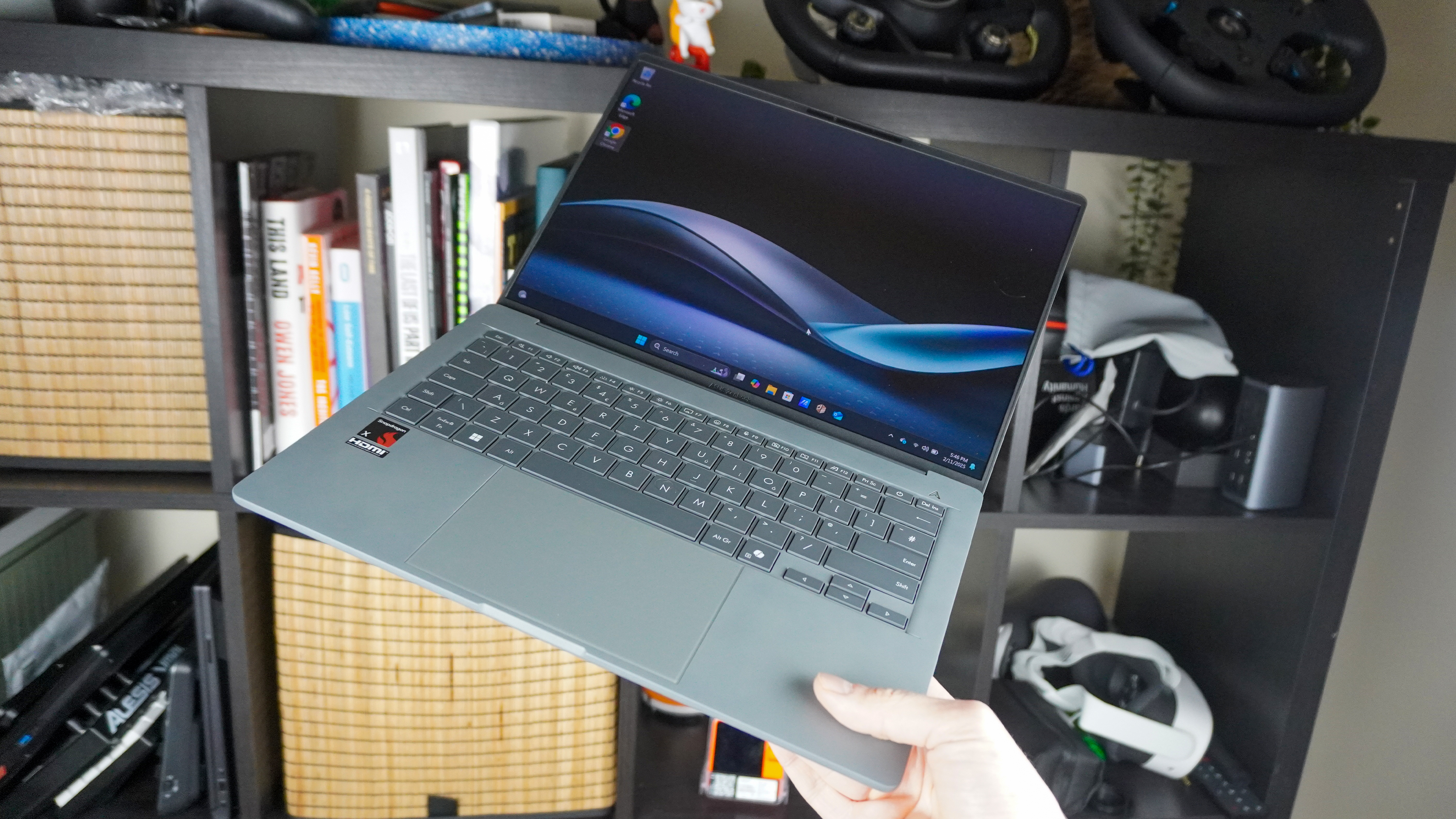
The M3 MacBook Air is a slim and lightweight laptop — don’t get me wrong. But the Asus Zenbook A14 has just stepped into the room and, quite frankly, embarrassed it.
You see, the 13-inch Air comes in at a svelte 2.7 pounds, whereas the Zenbook has gone through the equivalent of a phenomenal New Year’s weightwatchers journey at a touch under 2.2 pounds. It makes it feel almost shockingly featherweight in the hand.
And shout-out once again to the ceraluminum material used to build the Zenbook A14. Even though the name is rather silly, it does lead to surfaces that look irresistibly luxurious with no fingerprint marks or scuffs upon touching, and feel almost like paper.
Uncompromised ergonomics
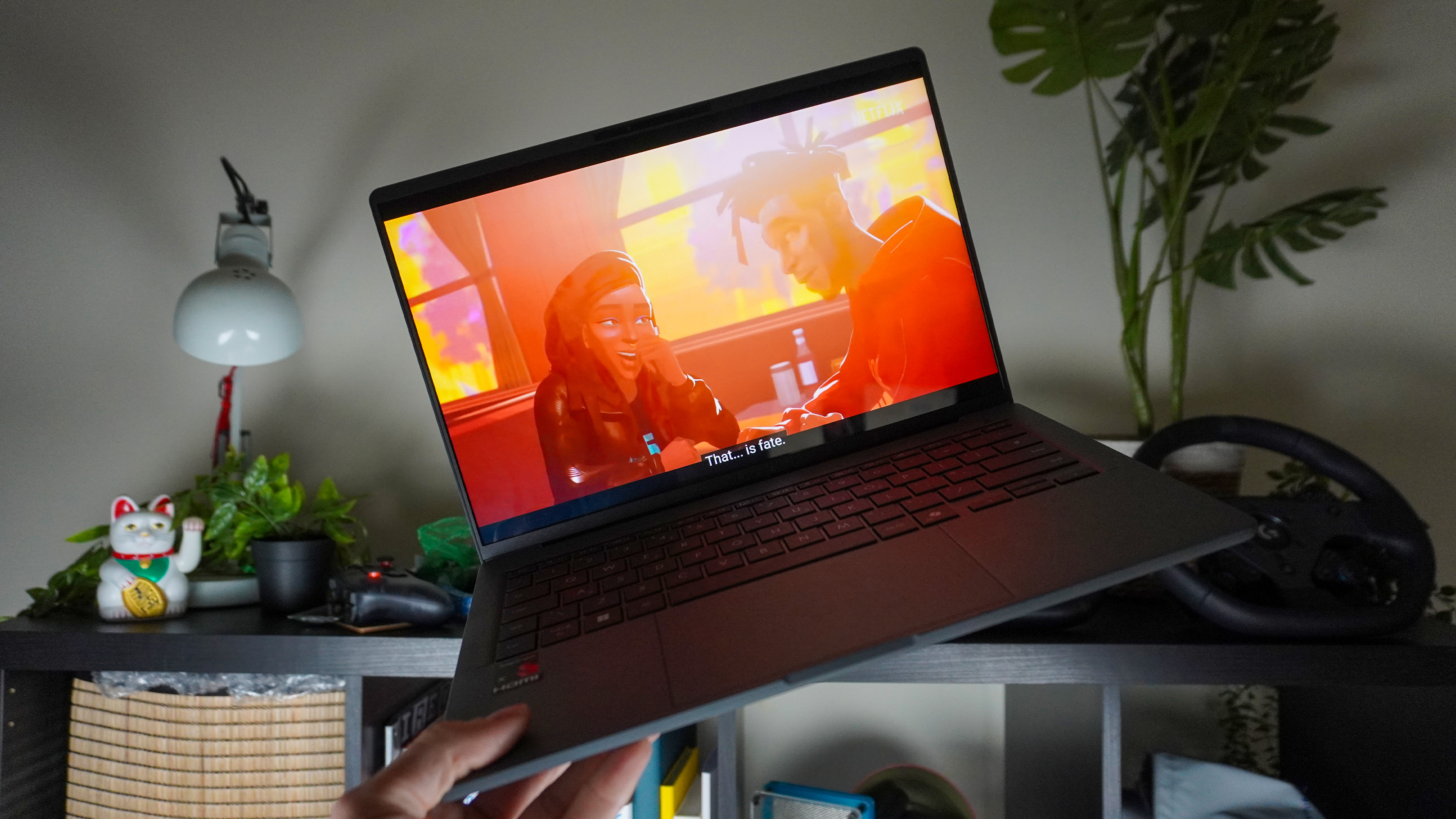
The 14-inch FHD OLED panel comes alive with whatever you watch or do. In my time, I fired up Tom’s Guide’s YouTube channel, and each video felt like a flash flood of color with impressively deep contrast to boot.
Whether you’re binge-watching the night away or working hard across several tabs, the panel may be a bit dim compared to its LCD brethren in the MacBook Air, but the difference in vividness is night and day.
Meanwhile, on the bottom deck, you’ve got a stellar keyboard — deep chiclet keys that are synonymous with Asus’ great work in the typing department.
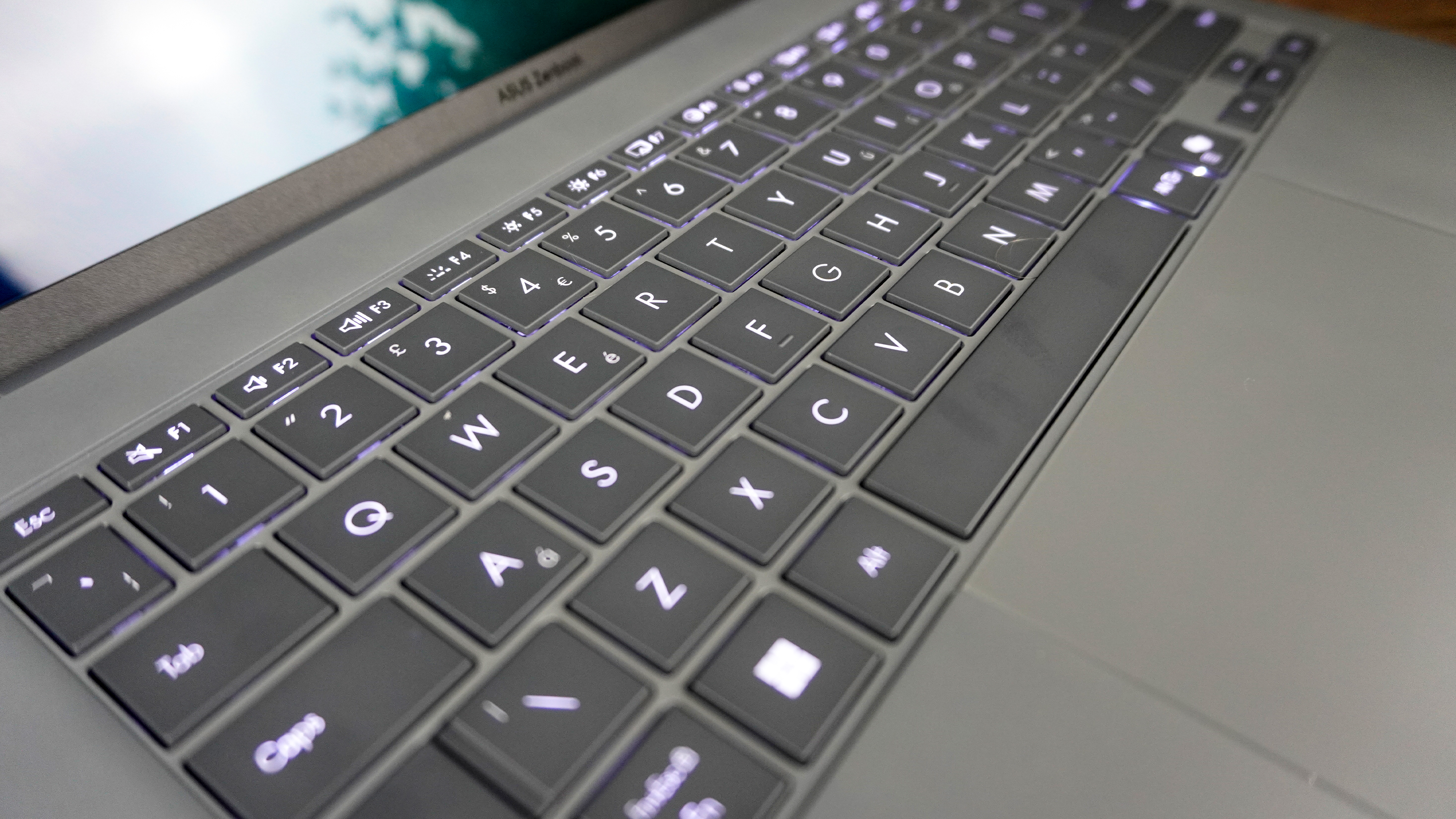
Plus, that giant touchpad has a gorgeously smooth surface, along with edge gestures to control the brightness and volume easily.
Combine it all together, and you’ve got a cracking laptop to get stuff done on and entertain yourself, too.
Ultimate power efficiency
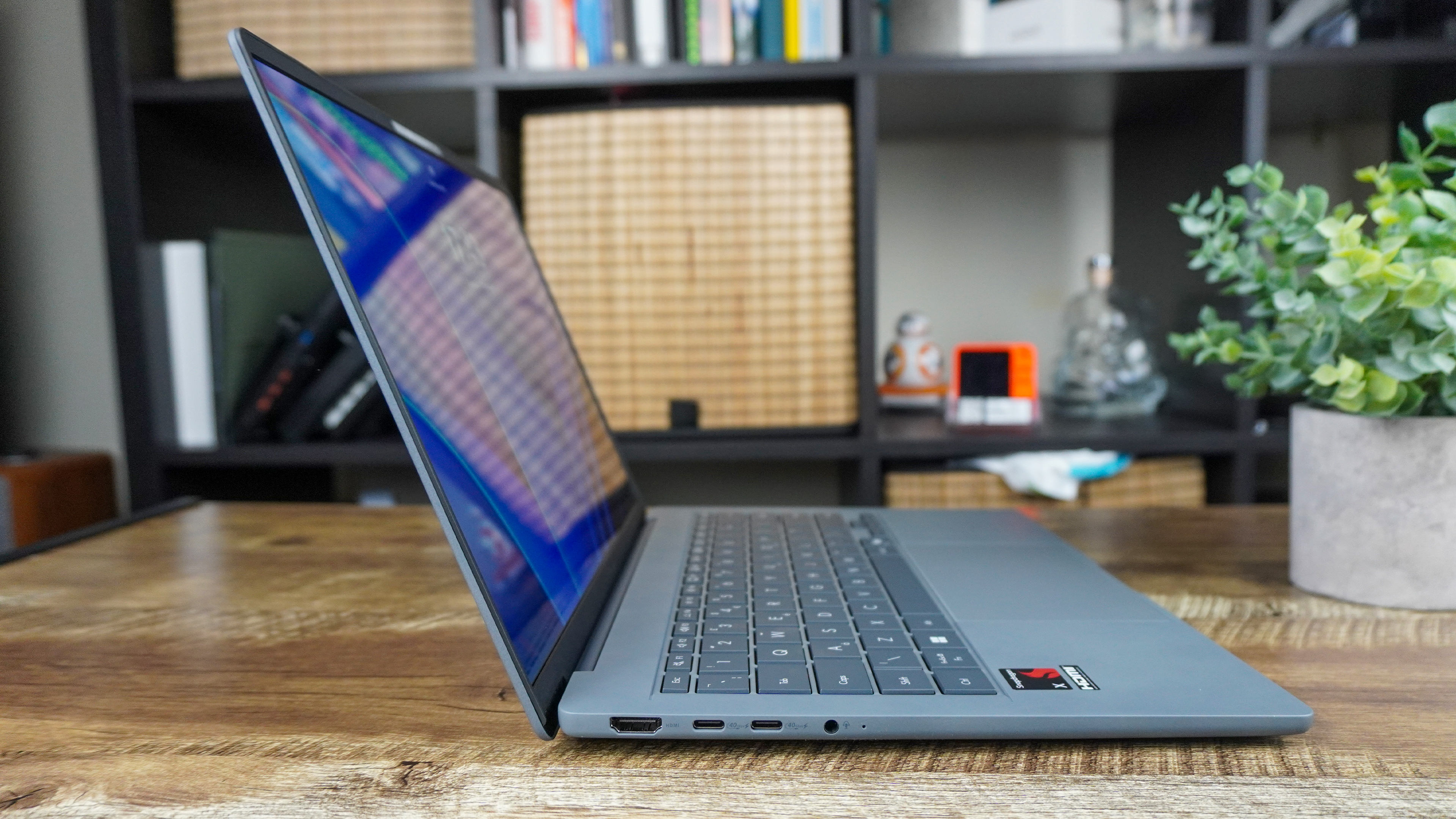
I may have some gripes with the Snapdragon X chip (more on that later), but its key superpower is how it can sip that 70Wh battery to provide serious all-day stamina.
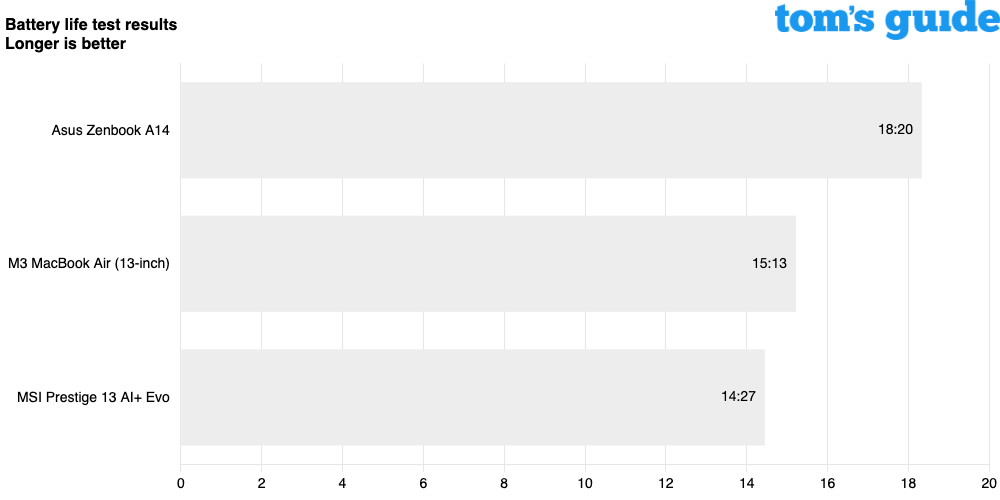
Yes, it’s not the 32 hours Asus talked about — to clarify, this was for video playback time. But in our testing involving constant web browsing, it humiliates its competition with an additional 3 hours of longevity.
This puts it solidly in the worry-free battery life territory. Not once in my time out and about with the A14 did I remotely worry about having to find a power outlet in the bar, the cafe or anywhere else!
Asus Zenbook A14: The downs
With a few weeks under my belt with the Zenbook A14, I started to hit the limits of what this entry-level chipset could do all too often. And I’ve got to be real — that shouldn’t happen in a laptop at this price.
X doesn’t have much to give to ya
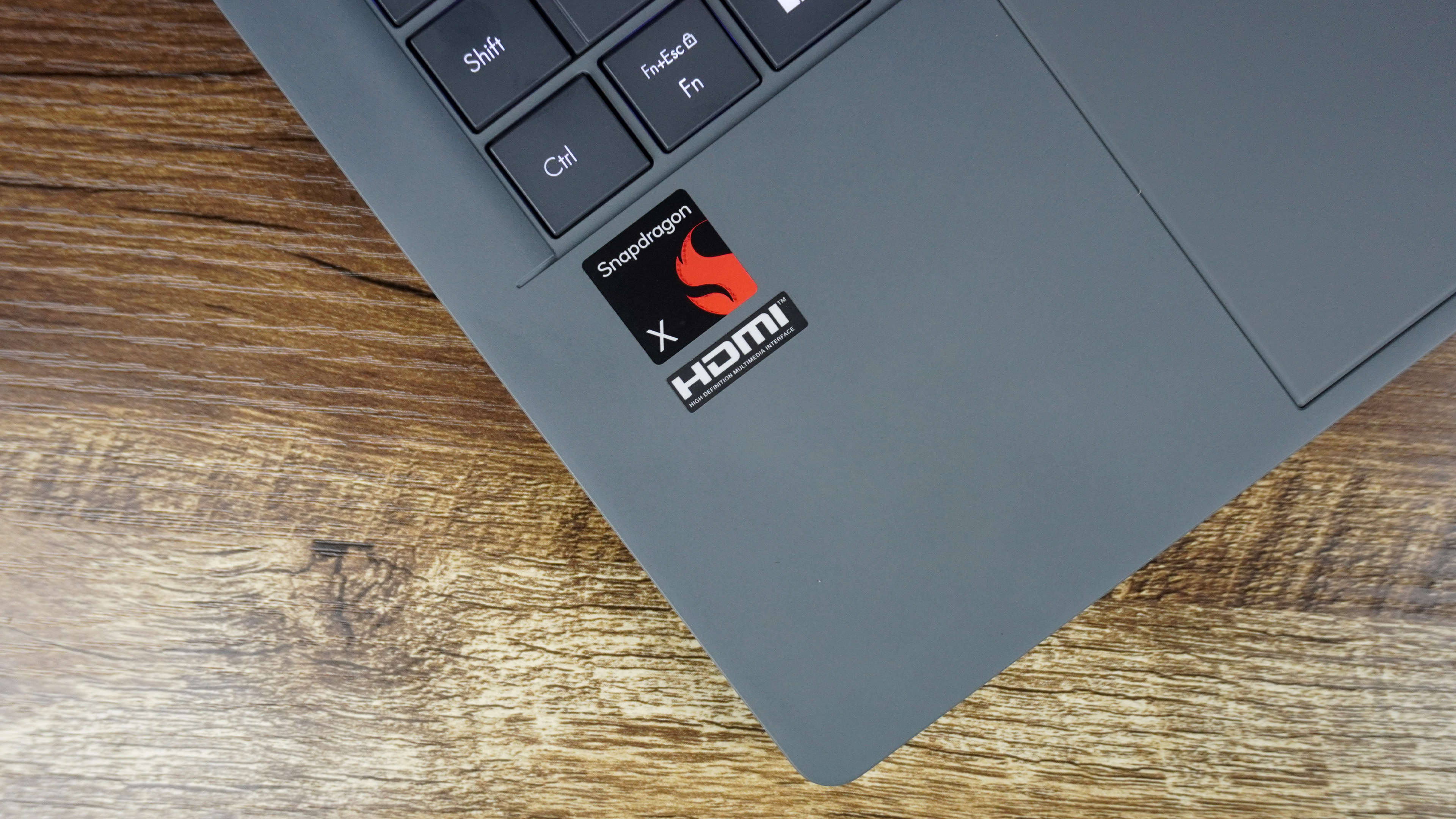
I’ve been a Snapdragon X stan for a while now — X Elite and X Plus have overperformed in their respective categories and really put the likes of Intel and AMD on blast. But the choices made in the lowest-tier X (X126100 to be specific) have led to a chip that is fast for certain tasks, but feels the pressure all too easily.
And even more concerning is the graphics performance. This Arm chip’s x86 competition has been busy cooking and placing emphasis on this to help with tasks that need a little help from a GPU — like video rendering or casual gaming. Graphics were always a weak point of Qualcomm’s chip, and in a lower-tier chip, the problem is even worse.
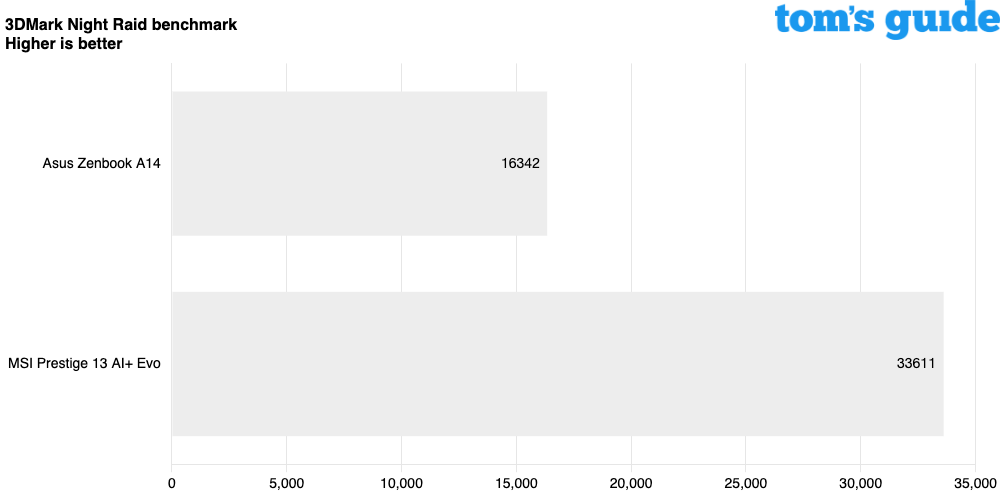
I can throw all kinds of numbers at you to prove my point. But tying these back to my day-to-day use, most of the casual tasks zip by nicely thanks to that 16GB of onboard RAM. But once you really start to lean on it, it starts to slow.
Once I had my usual number of Chrome tabs (roughly 20) open, Apple Music blaring in the background and some Photoshop editing, that’s when you really start to see it stutter. Rendering of edits slows to a crawl and flipping between tabs takes a few seconds to jump.
The price is wrong
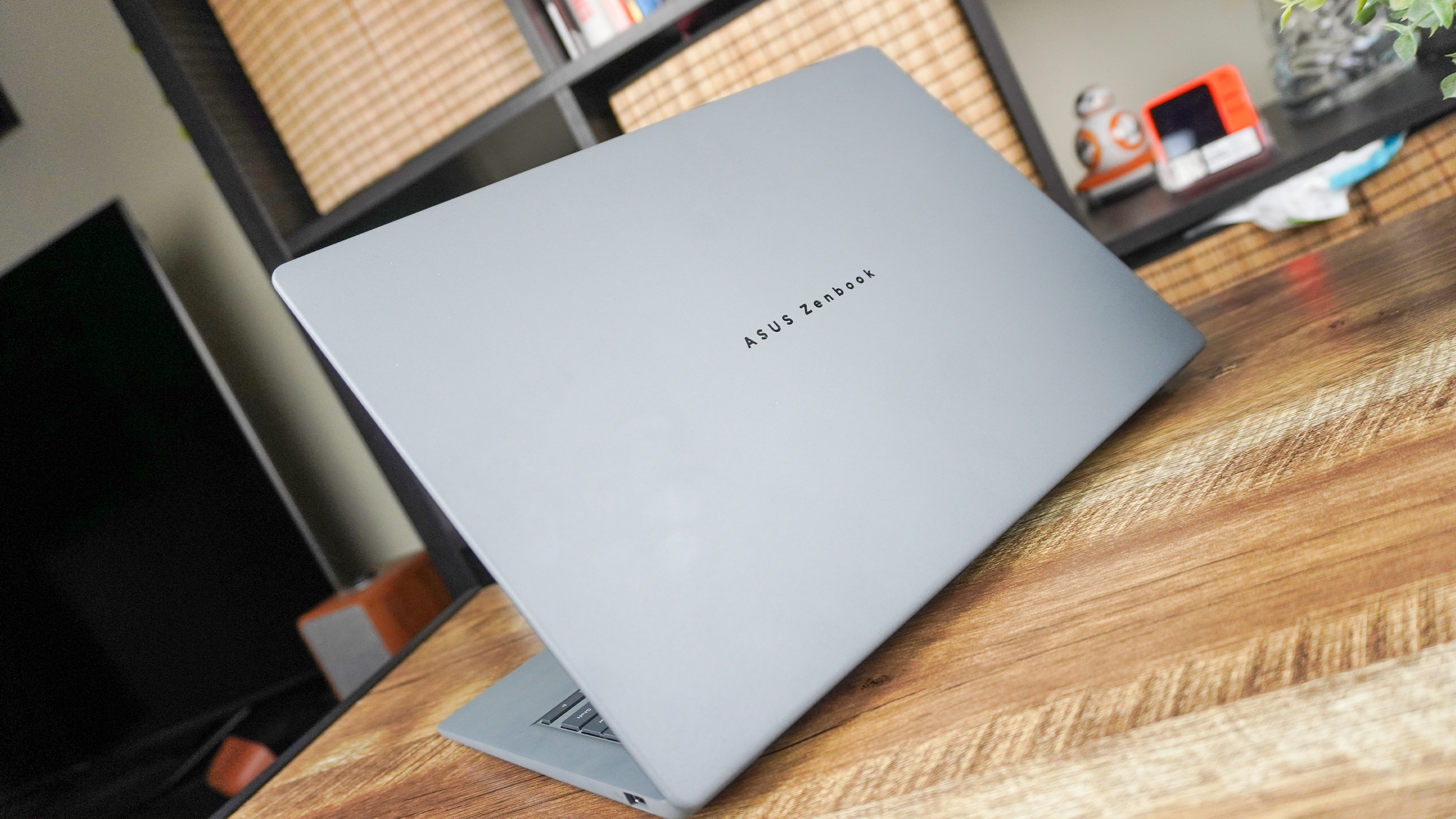
To stick this at $1,099/£1,099 is steep. That goes doubly when you take into account just how much you can do on this thing. I wouldn’t necessarily say that makes it dead on arrival, but it just means that you need to fit into the very specific category of casual work to really enjoy the Zenbook A14 as a whole for this cost.
If you need more horsepower and don’t mind dipping that extra couple of hours on battery life (I mean, 15 hours on one charge is still a long time), then the Air is giving you better value for money — in spite of that smaller base SSD size.
However, it is worth noting that an $899 model of the Asus Zenbook A14 is indeed coming soon. Keep a close eye on this review, as the score may go up based on our testing of this model. Put simply, if this base model offers much of the same as we see here, then the story changes in comparison to the MacBook Air.
Asus Zenbook A14: Verdict
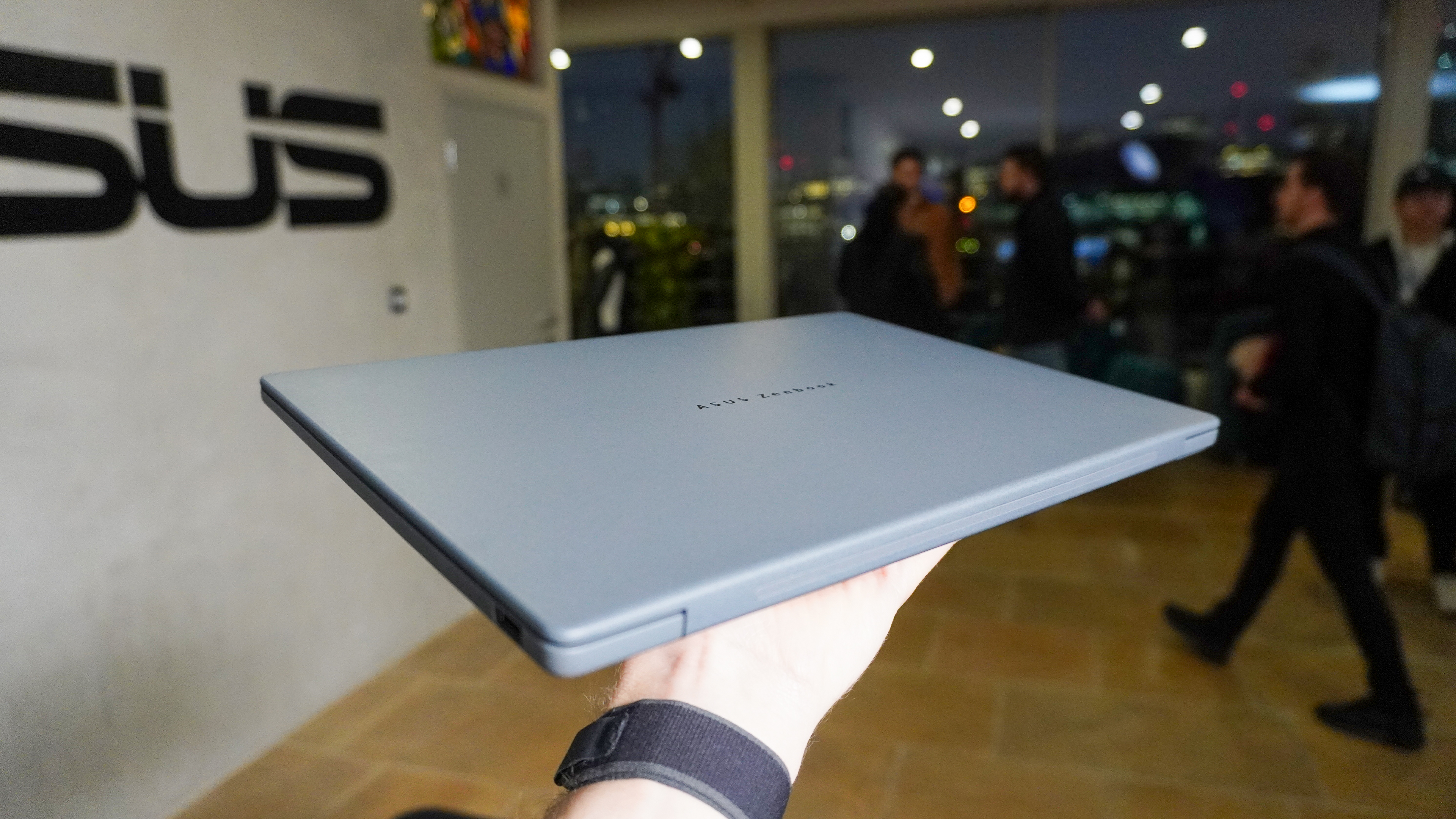
So let me be clear. The Asus Zenbook A14 is on the right track — this is a great all-rounder laptop in day-to-day casual use. The size, weight and aesthetics impressed me all month long, that OLED display is seriously a treat for the eyes and the battery life is huge.
But to beat the MacBook Air, you need to become the MacBook Air, and this misses that key element of all-round good performance to really hit Apple where it hurts. And to ask for $1,099 for it is a tricky purchase to warrant.
Maybe with the Snapdragon X Elite version, Asus can take the Air’s crown. But this first shot falls a little short.







